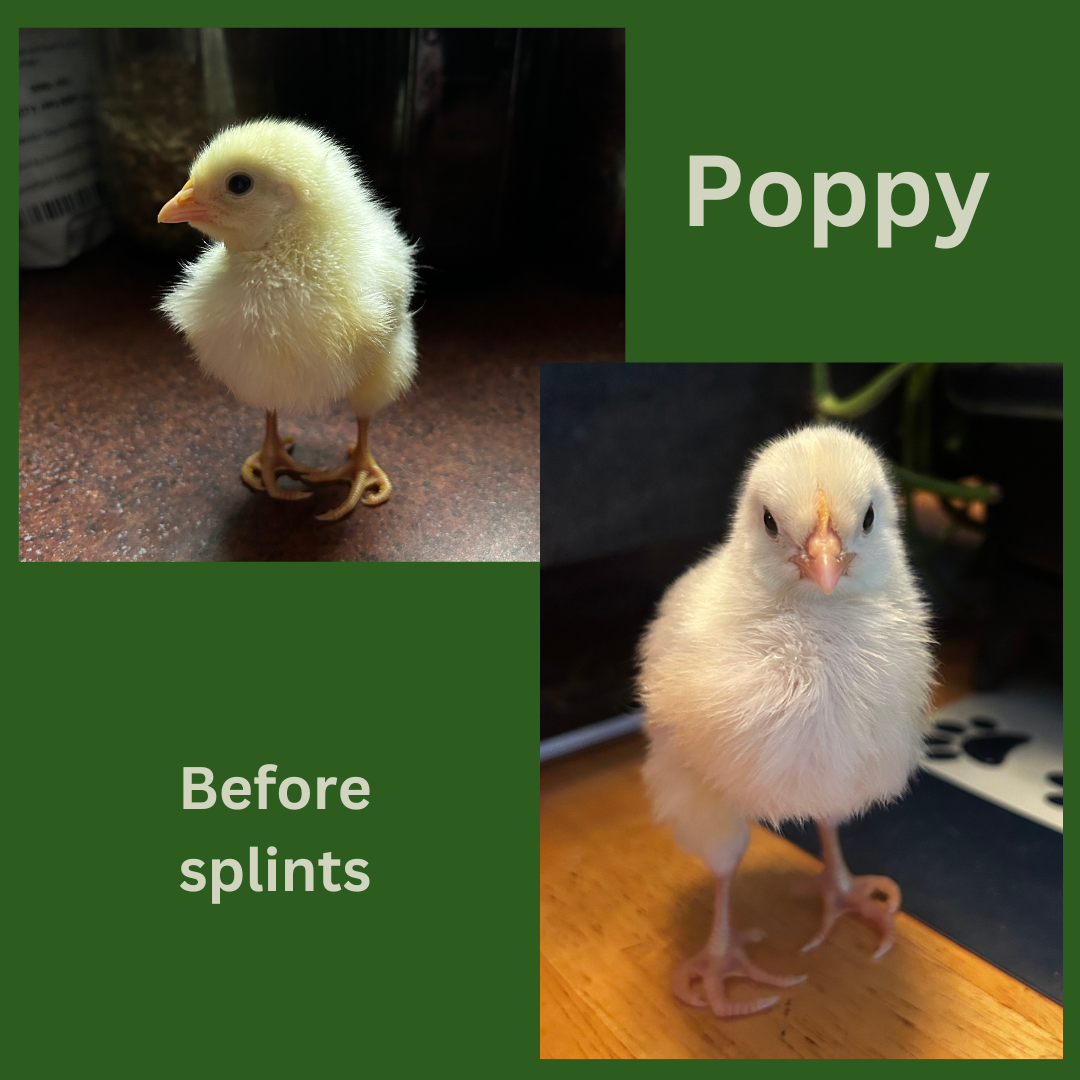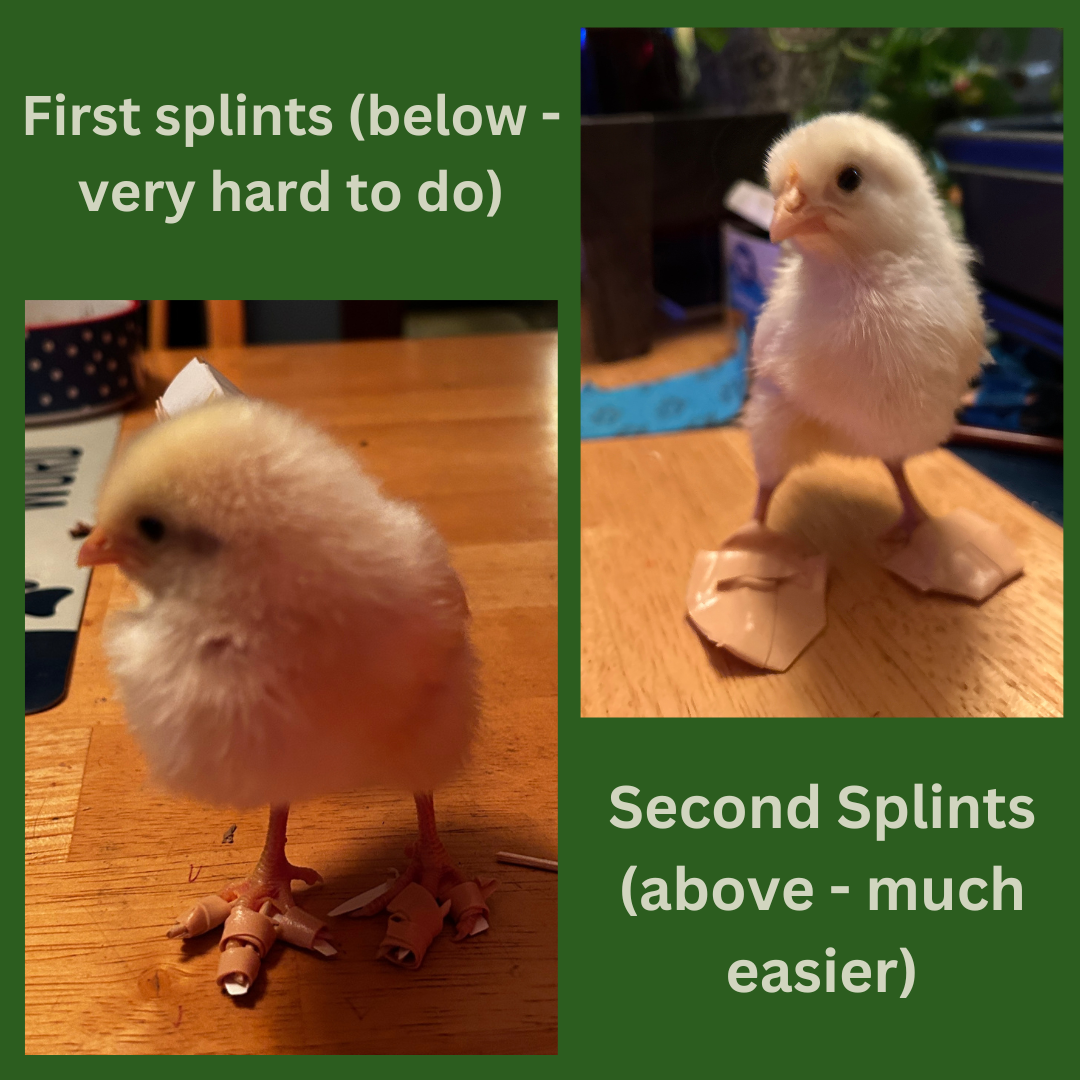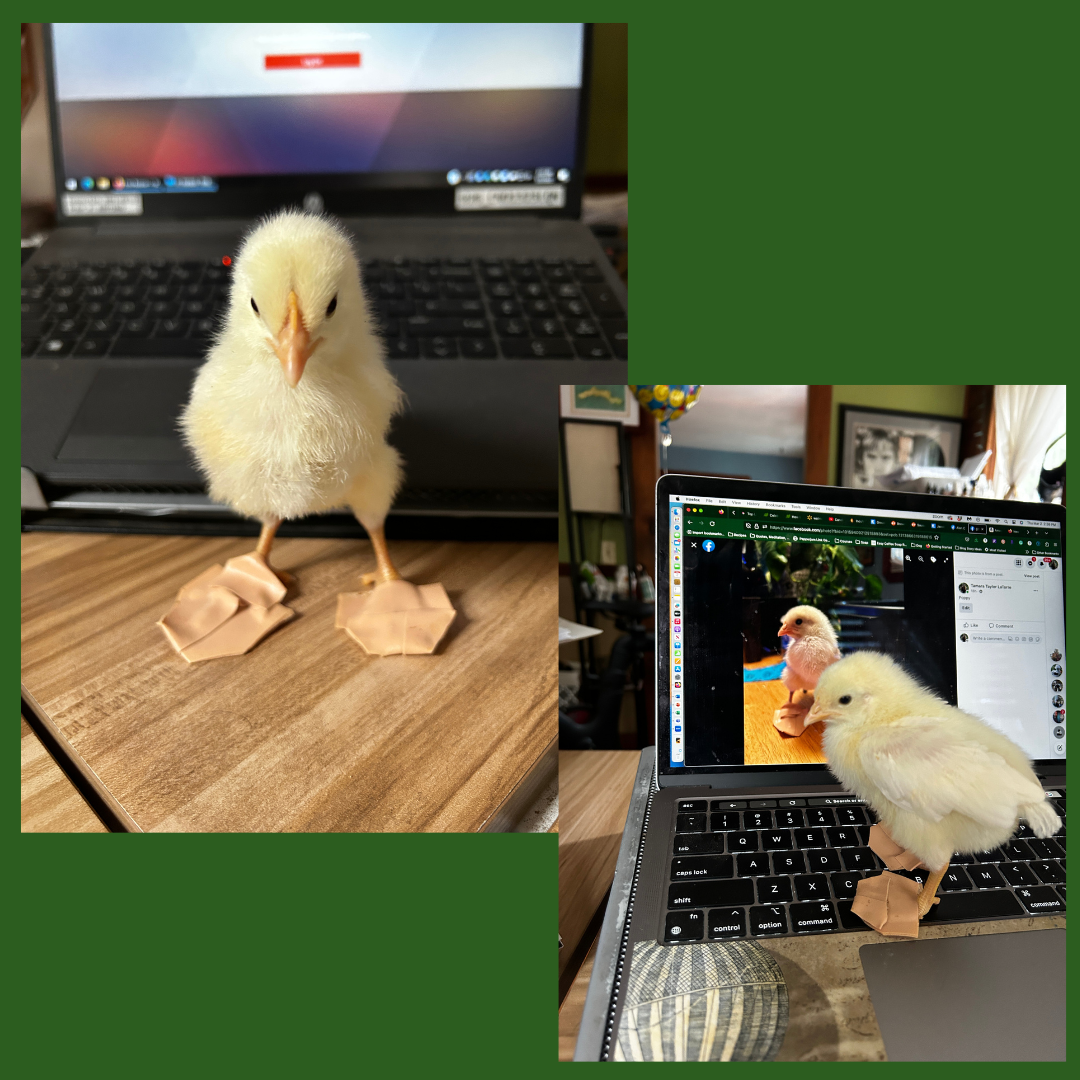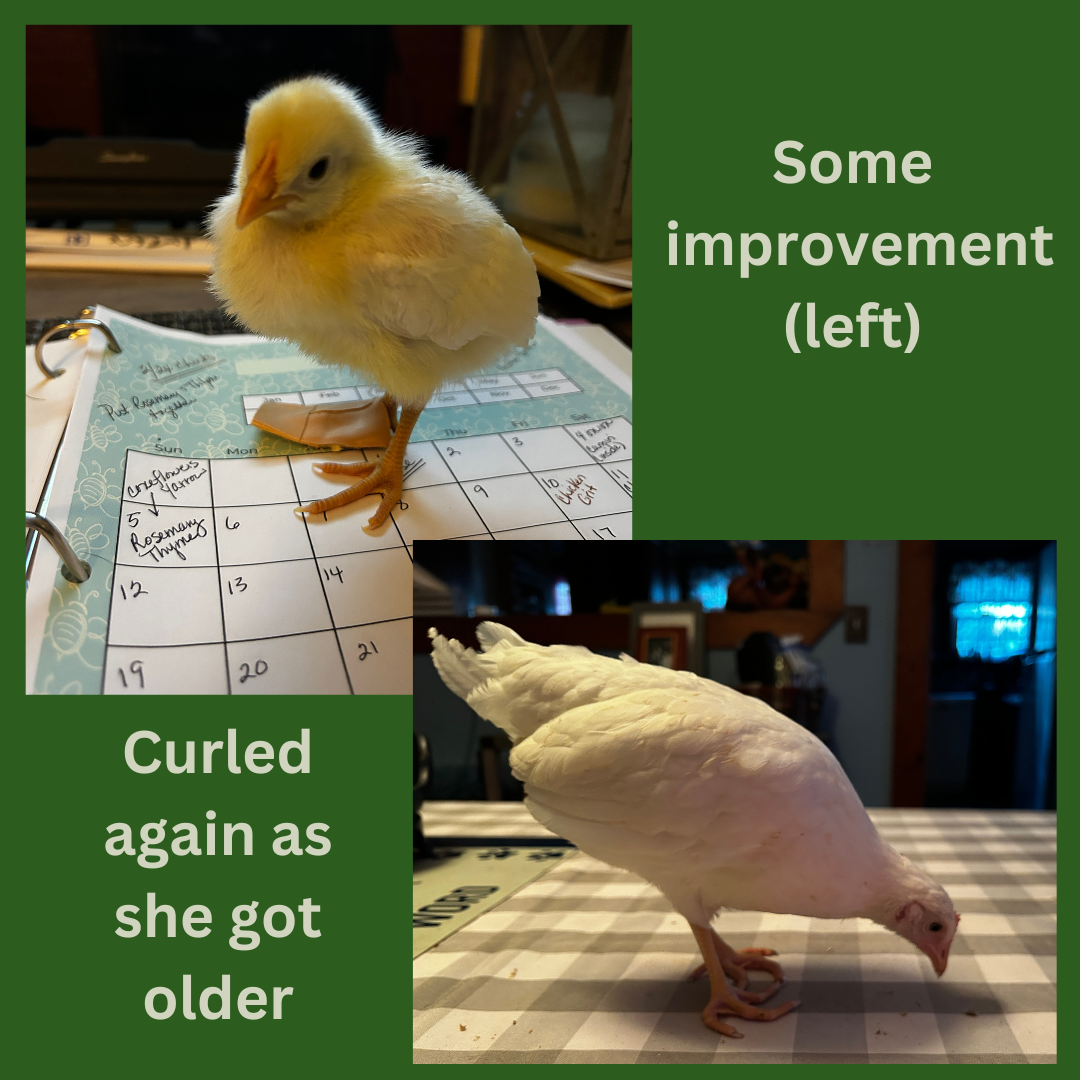
Poppy the Leghorn: A Story of Resilience and Productivity

Meet Poppy, our spirited Leghorn hen who joined our flock in 2023. She came to us from Tractor Supply as a tiny chick, full of potential and ready to grow into the strong, productive bird that Leghorns are known to be. However, we quickly noticed that Poppy had a unique challenge—her toes were curled. Concerned for her well-being, we did our research and decided to create braces to help straighten her toes. This meant that Poppy was handled often in her early days as we carefully changed her braces daily. At first, it seemed like our efforts were paying off, but over time, her toes curled again and remained that way.
Despite this slight disability, Poppy has shown remarkable resilience. She can roost just like the other hens and goes about her day without any signs of struggle. In fact, if you didn't know her story, you'd never guess that her toes are curled. But Poppy’s true superpower lies in her egg-laying abilities. She is our best layer, faithfully delivering an egg almost every day. She only occasionally misses a day, and even then, it’s rare—maybe once every couple of months. Poppy’s story is a testament to the incredible resilience and productivity of the Leghorn breed, and she holds a special place in our hearts.
The Leghorn Chicken: A Breed Overview
Origins and History
Leghorn chickens are one of the most iconic and well-known chicken breeds in the world, particularly renowned for their prolific egg-laying capabilities. The breed originated in Italy, specifically in the Tuscany region, and was initially called “Livorno” after the Italian port city from which they were exported. When they arrived in America in the 1820s, the name was anglicized to "Leghorn." Over the years, Leghorns were selectively bred to enhance their laying abilities, making them a cornerstone of the commercial egg industry.
Appearance
Leghorns are medium-sized chickens with a sleek and elegant appearance. They have a distinctively upright posture, accentuated by their large, bright red combs and wattles, which contrast beautifully against their white feathers. However, Leghorns can come in a variety of colors, including brown, black, and buff, though the white variety is the most common. They have yellow skin and legs, with sharp, alert eyes that give them a lively expression. Leghorns are lightweight, with hens typically weighing around 4.5 to 5 pounds, which contributes to their efficiency as layers.
Temperament and Personality

Leghorns are known for being active, energetic, and somewhat independent. They are excellent foragers and will happily spend their days exploring the yard, searching for insects, and scratching at the ground. This active lifestyle makes them well-suited for free-range environments, where they can satisfy their natural instincts. However, their independent nature means they might not be as cuddly or docile as some other breeds. Leghorns are often described as "flighty" or "skittish," especially if they are not handled frequently from a young age.
That said, with regular handling, Leghorns can become more accustomed to human interaction, as evidenced by Poppy’s experience. Her early handling due to her toe braces helped her become comfortable with being held, even if Leghorns are not typically known for their lap-loving tendencies.
Egg Production

Leghorns are celebrated primarily for their exceptional egg production. A healthy Leghorn hen can lay between 280 to 320 large white eggs per year, making them one of the most productive layers among all chicken breeds. This remarkable productivity has made them a favorite choice for both backyard chicken keepers and commercial egg producers alike. Leghorns start laying at around 18 to 20 weeks of age and, as Poppy demonstrates, they often continue laying consistently with minimal interruptions.
Their eggs are large and white, with strong shells that are prized in the marketplace. Leghorns are also known for their efficiency, as they lay a high number of eggs relative to their feed consumption, making them economical to keep.
Health and Hardiness

Leghorns are generally hardy birds that can adapt well to a variety of climates. However, their large combs can make them more susceptible to frostbite in extremely cold weather, so care should be taken to provide adequate shelter and possibly apply petroleum jelly to their combs during winter to prevent this. Despite their light frame, Leghorns are robust and have a strong immune system, which helps them resist common poultry diseases.
In Poppy’s case, her curled toes are a minor disability that doesn’t seem to affect her overall health or productivity. This resilience is typical of the Leghorn breed, which can thrive even with minor physical challenges.
Care Requirements
Leghorns are relatively low-maintenance chickens, but their high energy levels mean they need plenty of space to roam and forage. If confined, they should be provided with plenty of enrichment to keep them occupied. Leghorns are excellent at converting feed into eggs, but they will benefit from a balanced diet that includes high-quality layer feed supplemented with calcium for strong eggshells.
Regular health checks are essential, as with any breed, to ensure they remain in top laying condition. Special attention should be given to their combs and wattles in cold climates to prevent frostbite, and providing dust baths will help them keep their feathers clean and free from parasites.
Fun Facts About Leghorns
Prolific Layers: Leghorns are one of the top breeds used in commercial egg production due to their prolific laying abilities.
Independence: They are highly independent and excellent foragers, making them well-suited to free-range environments.
Flighty Nature: Leghorns can be a bit skittish and are known for being more flighty than other breeds, often preferring to keep their distance from humans unless handled frequently from a young age.
Egg Color: While most chickens lay eggs in various shades of brown, Leghorns are known for their large, bright white eggs, which are often seen as the standard for grocery store eggs.
Global Presence: The Leghorn breed has had a significant impact worldwide and remains one of the most popular and widely recognized chicken breeds.
Conclusion
Leghorns, like Poppy, are a fantastic choice for anyone looking for a reliable, prolific layer with a lively personality. While they may require a bit more space and prefer to be left to their own devices, their hardiness and egg-laying abilities make them a valuable addition to any flock. Poppy’s story is a heartwarming reminder that even chickens with minor physical challenges can thrive and become an essential part of the homestead, rewarding their keepers with daily eggs and a bit of extra love.
